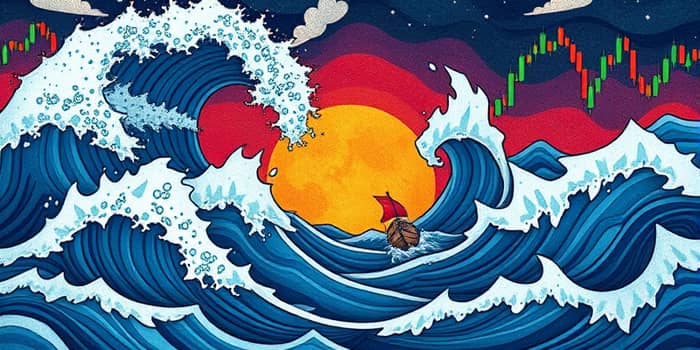
In an era of rapid information flow and global interconnectivity, financial markets often resemble tempestuous seas. Prices surge and plunge within moments, driven by data releases, policy shifts, and unexpected events. Understanding this inherent instability—market volatility—and learning to chart a course through it is essential for both new and seasoned investors.
Market volatility refers to the frequency and magnitude of price fluctuations in financial assets such as stocks, bonds, or commodities. It reflects the uncertainty and risk perceived by market participants. One of the most cited benchmarks of this concept is the VIX Index, often termed the market’s fear gauge of investor sentiment. A rising VIX suggests traders anticipate larger price swings in the near term, whereas a subdued VIX implies relative calm.
At its core, volatility captures how wildly prices oscillate over a set period. By measuring these swings, investors can gauge risk levels and make informed decisions about position sizing and risk management.
Multiple forces conspire to drive market turbulence. Some are predictable, tied to economic cycles or corporate reporting schedules. Others emerge abruptly from geopolitical clashes or algorithmic trading anomalies.
Investors use several metrics to quantify market turbulence. The VIX Index estimates the expected 30-day volatility of the S&P 500 based on option prices. In 2025, the VIX has hovered between 21.4 and 27.5, notably above its long-term average.
Another useful gauge is the standard deviation of historical price returns. A higher standard deviation translates to larger average pricing deviations from the mean, signaling greater potential risk and reward for asset-holders.
In 2025, volatility has remained elevated compared to the 10- and 30-year historical norms. A cocktail of persistent inflation concerns, shifting interest rate trajectories, and geopolitical flashpoints underlies this environment. Tariff policy debates, deglobalization pressures, and conflicts in the Middle East have all contributed to sudden market gyrations.
April 2025 was particularly dramatic. A surprise tariff announcement sparked a 12% drop in the S&P 500 within a single week. However, robust corporate earnings reports and subsequent policy adjustments helped markets recover swiftly. By the end of Q2, developed market equities delivered an impressive total return of 11.6%.
The so-called “Magnificent 7” tech giants led the charge, recording an 18.6% price return in Q2. This performance propelled global growth stocks to 17.7% in total returns for the quarter. Despite this rebound, emerging markets continued to exhibit the highest volatility, driven by political uncertainty and currency fluctuations.
For perspective, the VIX spiked to 85.5 during the 2020 pandemic-induced crash. By contrast, today’s elevated but comparatively moderate levels underscore a market that is nervy but not yet in crisis mode.
Volatility can feel unsettling, but it also presents opportunities. By adopting disciplined practices, investors can ride out storms and even profit from them.
Remaining informed and prepared is key to thriving when markets swing. Below is a concise summary of the most critical volatility metrics and recent events:
Human psychology often amplifies market swings. Fear can drive rapid selling, while euphoria may inflate asset bubbles. Recognizing these biases helps investors avoid herd behavior and make more rational decisions. Tools such as sentiment surveys, positioning data, and contrarian indicators can signal when sentiment has become excessively one-sided.
Emerging markets typically exhibit higher volatility due to political risk, evolving regulatory regimes, and currency fluctuations. In contrast, developed markets benefit from deeper liquidity, transparent regulations, and robust institutions. Allocating a measured portion of a diversified portfolio to emerging economies can boost returns, but it should be balanced with more stable assets to manage overall risk.
The rise of high-frequency trading has reshaped market dynamics. Advanced algorithms can execute thousands of orders in seconds, reacting to price movements and news events instantaneously. While this adds liquidity, it can also exacerbate sharp moves during periods of stress, as automated strategies unwind positions in unison.
Markets have weathered wars, financial crises, and pandemics. After each shock—be it the dot-com bust, the 2008 financial crisis, or the COVID-19 crash—equities eventually rebounded to new highs. These recoveries underscore the value of staying invested through market cycles and resisting the temptation to time the bottom.
Market volatility is an intrinsic element of investing. By understanding its drivers, measuring its magnitude, and deploying disciplined strategies, investors can navigate turbulent periods with confidence. Embracing volatility as both a challenge and an opportunity enables long-term success and fosters resilience in the face of uncertainty.
References













